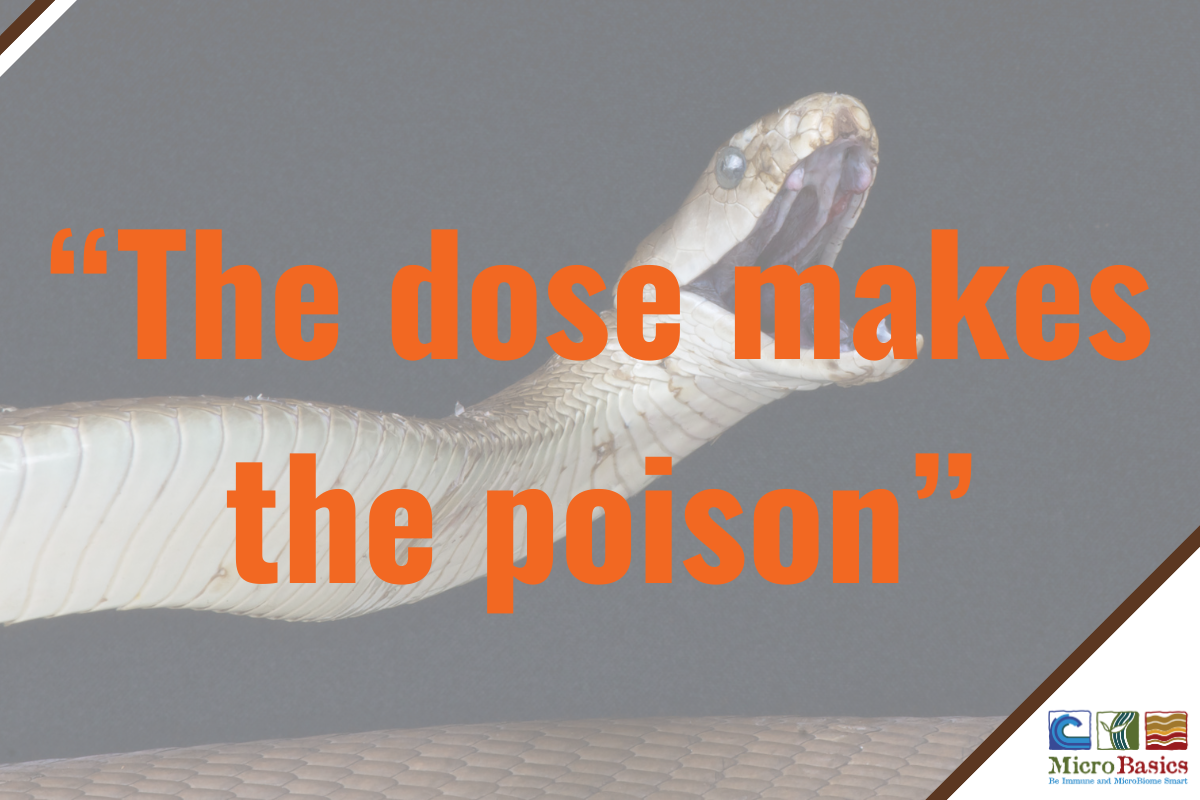The U. N.’s Food and Agriculture Organization (FA) estimates that annually 25% of the world food crops are contaminated with mycotoxins. Mycotoxins are toxic secondary metabolites produced by mold and are harmful to living organisms. Exposure is usually by consumption, contact, or inhalation of contaminated feeds. Negative biological effects because of mycotoxin exposure include liver and kidney toxicity, central nervous system effects, and estrogenic effects.
Mold in feedstuffs
Mold is a fuzzy looking fungus that occurs in feedstuffs. Molds can cause a disease called mycosis that typically occurs when the immune system is suppressed during stressful times. Mycosis can occur in many different locations including the lungs, mammary gland, uterus, or intestine. Intestinal infection may result in hemorrhagic bowel.
Molds also produce poisons called mycotoxins that affect animals when they eat contaminated feeds, resulting in mycotoxicosis.
Mycotoxins in Cattle
Because of degradation in the rumen, cattle are more resistant to mycotoxins than monogastric animals are. Due to greater feed consumption and production stresses, dairy cattle may be more susceptible to mycotoxins than beef cattle.
There are hundreds of mycotoxins known, only a few have been extensively researched. Mycotoxins of greatest concern most often include ergots produced in small grains, fescue, and grasses. Aflatoxin which is usually produced by Aspergillus mold; deoxynivalenol, zearalenone, T-2 toxin, and fumonisin. Contaminated feeds often contain multiple mycotoxins which alters the expected symptoms of the animal.
Management
Mold spores are in the soil and in plant debris and can grow on crops in the field, during harvest, or during storage, processing or feeding. Management of crop production can reduce the prevalence and concentrations of mycotoxins.
Management of crops can help to reduce the amount of mold and mycotoxin contamination delivered to the animal. Hybrid selection, reduced field and harvest stress, rapid filling of silo bunk or bag, applying a silage inoculant, tight packing, covering, rapid feed-out, and discarding spoiled feed all help to reduce exposure.
Illness
A single dose of mycotoxin can cause an acute toxicity in cattle, but it is more likely that low-level consumption over time will result in more chronic symptoms. Mycotoxins affect cattle by reducing feed consumption, reducing nutrient utilization, altering rumen fermentation, suppressing immunity, altering reproduction, irritating tissues, and causing cellular death. Diagnosis is difficult because mycotoxin residues are not easily detected in the animal and symptoms are nonspecific and may result in a series of events of opportunistic diseases.
Detection
Feed analysis to detect mycotoxins is difficult as it is hard to gather representative feed samples. Not all mycotoxins can be detected by commercial laboratories. Managing the quantity of contaminated feed in a ration can help to reduce the impact of mycotoxins on the animal. See chart below for Mycotoxin Guidelines and Dietary Limits.
|
POTENTIALLY HARMFUL TOXIN LOADS FOR TOTAL DIET DRY MATTER |
|||||
|
|
Dairy |
Feedlot |
Swine |
Poultry |
Equine |
|
Toxin Type |
All underlined values are in PPM, all others are in PPB |
||||
|
Aflatoxin |
20 |
20 |
29 |
20 |
20 |
|
Deoxynivalenol (DON or Vomitoxin) * |
0.5-1.0 |
10 |
1 |
2 |
500 |
|
Fumonisin |
2 |
7 |
10 |
20 |
500 |
|
T-2 Toxin |
100 |
500 |
100 |
100 |
50 |
|
Zearalenone |
400 |
5 |
300 |
10 |
50 |
|
Ochratoxin |
5 |
5 |
50 |
100 |
35 |
|
Ergot Toxins (combined) |
500 |
500 |
500 |
750 |
300 |
*Deoxynivalenol may be used as a marker for other forms of mycotoxin contamination. 90-100% of the time DON is detected with other mycotoxins present.
Measured toxin levels are likely not the only type of toxins present in a sample. Multiple toxins may interact to affect animal health and performance.
Source: Dr. John Goeser, PAS & Dipl. ACAN, Rock River Laboratories
Animal Health and Performance
When we fully understand the problem of mycotoxin contamination, we need to understand that the harmful effects impact overall animal health, performance, and the quality of consumable end products. Solutions to mycotoxin problems must include management, toxin binding, and address immune function.
Intercept and Intercept FEND support animal health during toxin challenges.
- I.P.S. (Immune Positioning System) a blend of biological polysaccharides and polypeptides.
- Adsorbents (Yeast Cell Wall, and Montmorillonite Clay).
- Yucca schidigera modifies rumen fermentation.
- Dietary nucleotides increase the maturity and growth of normal enterocytes.
- Live Yeast
- Yeast Culture
- Prebiotics
- Probiotics
- Postbiotics
For more information on managing toxin challenges on your farm, please reach out to us at service@microbasics.com
Written by: Mariah Gull, M.S.

